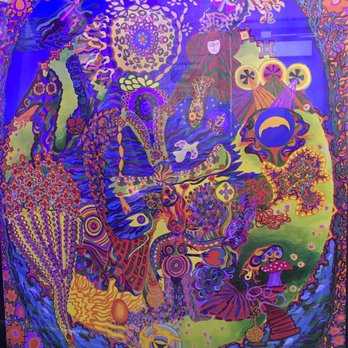Street art in Paris is not just graffiti; it is a powerful medium for social and political commentary, self-expression, and storytelling. Artists use various techniques and styles to convey their messages, often pushing boundaries and challenging societal norms. From large-scale murals to intricate stencil art, each piece tells a unique story and adds a splash of color to the urban landscape.
One of the best ways to explore the world of street art in Paris is through its many outdoor exhibitions and urban art festivals. These events bring together local and international artists, showcasing their works on buildings, bridges, and other public spaces. Visitors can wander through different neighborhoods, discovering hidden gems and experiencing the bustling energy of the city’s street art scene.
Whether you’re an art enthusiast, a history buff, or simply looking to immerse yourself in Parisian culture, the street art expositions in Paris offer a one-of-a-kind experience. They provide a platform for artists to share their stories and perspectives, while also enriching the city’s visual landscape. So, grab your camera and wander the streets of Paris to witness this captivating form of expression firsthand!
Graffiti is an integral part of urban Paris, giving the city its unique character and soul. From the bustling streets of Le Marais to the vibrant neighborhoods of Belleville, graffiti adorns the walls and buildings of the French capital, telling a story of the city’s rich history and culture.
Street art in Paris can be traced back to the 1960s when artists used the city walls as their canvas to express their political views and social commentary. Today, graffiti has evolved into a form of artistic expression that goes beyond rebellion, serving as a medium for artists to reach a wider audience and make a statement about the world we live in.
One of the most famous graffiti artists in Paris is Blek le Rat, often referred to as the “father of stencil graffiti.” His iconic rat stencils can be found throughout the city, making a bold statement about the urban environment and the role of street art in society.
Parisian graffiti is not just about individual artists, but also about the community that supports and embraces this art form. There are numerous graffiti festivals and events held in Paris, where artists come together to showcase their work and celebrate the power of street art. These events not only beautify the city but also provide a platform for artists to connect and collaborate with one another.
While some view graffiti as vandalism, many Parisians see it as a valuable part of their city’s cultural heritage. Graffiti adds color, vibrancy, and a touch of rebellion to the streets of Paris, making it a living, breathing canvas that reflects the ever-changing social and political landscape of the city.
So, the next time you visit Paris, take a moment to appreciate the graffiti that adorns the city’s walls. It is not just about spray paint on concrete – it is a form of art that encapsulates the spirit and soul of urban Paris.
The Evolution of Street Art in Paris
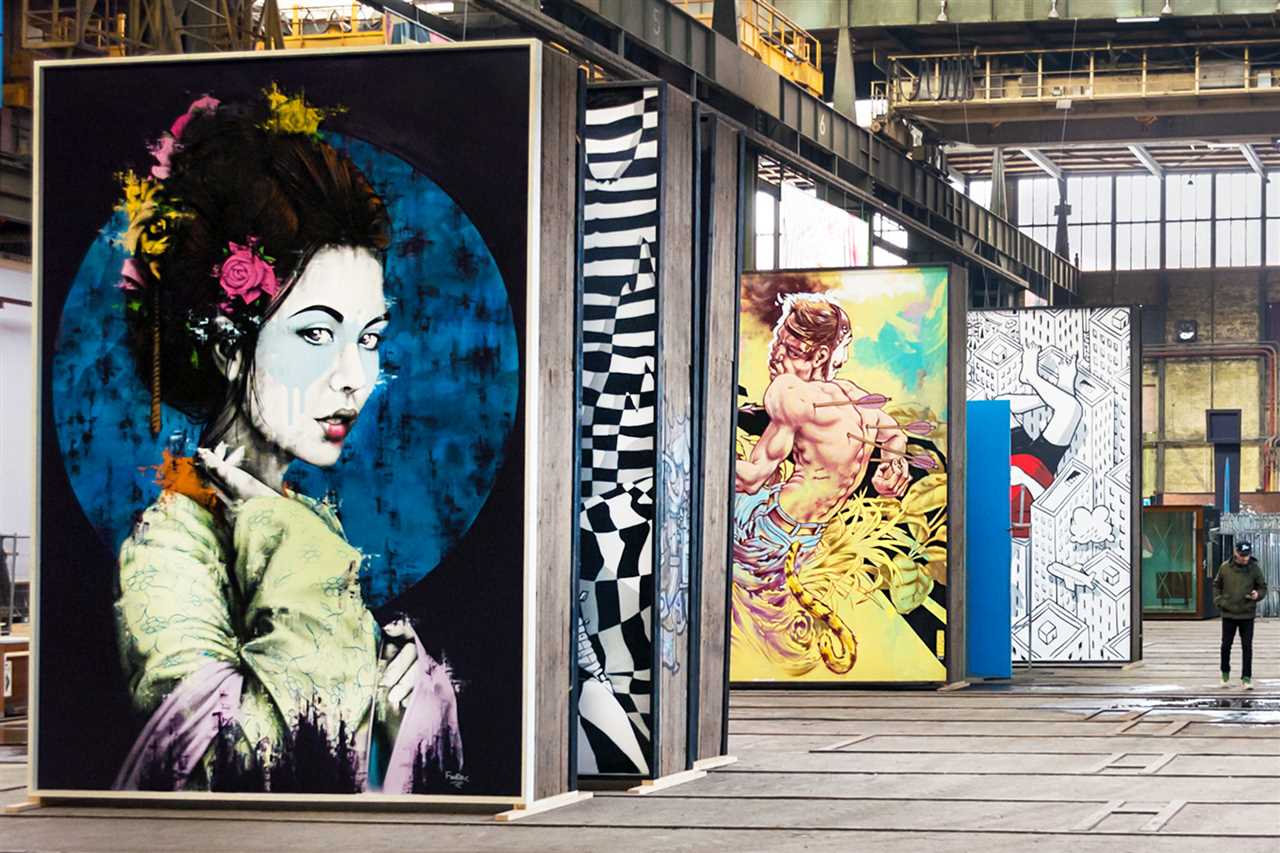
Paris, known for its rich history and artistic culture, has also been a hub for street art. Over the years, street art in Paris has evolved from simple graffiti to a highly regarded form of artistic expression.
The Origins of Street Art in Paris
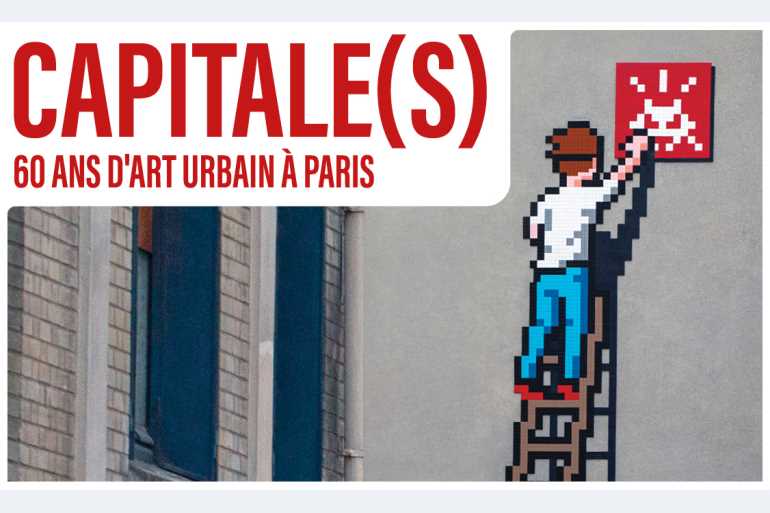
The origins of street art in Paris can be traced back to the 1960s and 1970s when various political and social movements swept through the city. Artists, inspired by the spirit of rebellion and the desire to challenge the status quo, began using the streets as their canvas. However, during this time, street art was often seen as vandalism and was heavily policed.
The Rise of Stencil Art
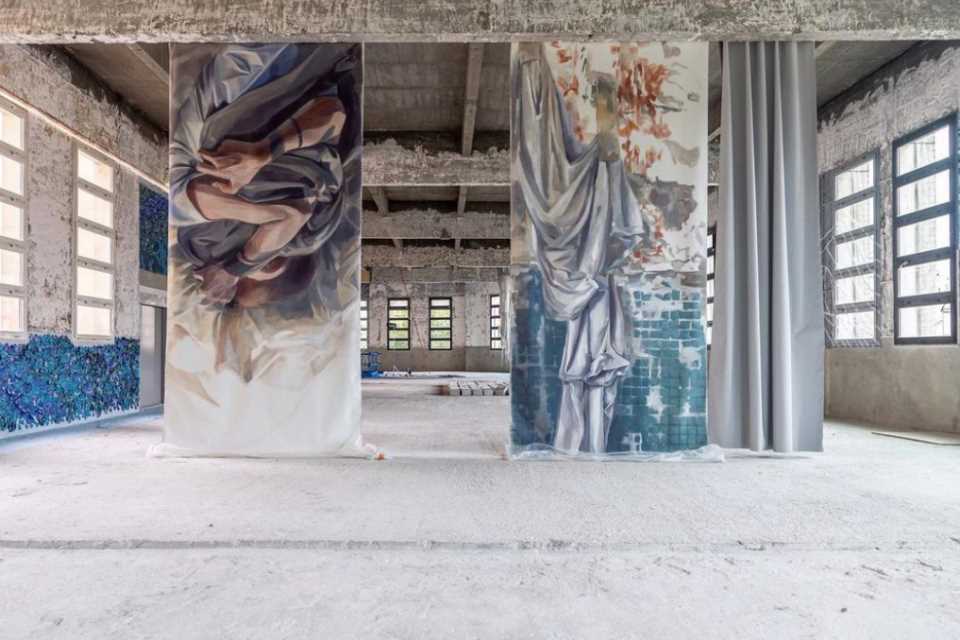
In the 1980s, stencil art emerged as a prominent form of street art in Paris. Artists like Blek le Rat and Jef Aerosol popularized this technique, using stencils to create intricate and detailed images on public walls. Stencil art not only allowed artists to quickly create their work, but it also provided a way to convey powerful messages and critique societal norms.
With the rise of stencil art, street art in Paris started gaining recognition as a legitimate art form. Galleries and museums began showcasing street art, and artists started receiving commissions to create murals and installations around the city.
The Fusion of Street Art and Graffiti
In recent years, there has been a fusion of street art and graffiti in Paris. Artists like Invader and Miss Tic have combined elements of both styles to create unique and visually striking pieces. This fusion allows for a diverse range of artistic techniques and themes, attracting a wider audience and generating more interest in street art.
Today, street art has become an integral part of Parisian culture. The city has designated legal spaces for street artists to showcase their work, such as the “Street Art Zone” in the 13th arrondissement. Street art tours have also become popular, allowing locals and tourists to explore the vibrant and ever-changing street art scene in Paris.
The evolution of street art in Paris reflects the changing attitudes towards this art form. What was once seen as an act of rebellion and vandalism is now celebrated as a vehicle for artistic expression and social commentary.
Paris continues to be a global center for street art, attracting both established and emerging artists from around the world. The ever-evolving landscape of street art in Paris ensures that this art form will continue to thrive and inspire for years to come.
Stencil Art: Paris’ Street Art Signature
One of the signature forms of street art in Paris is stencil art. Stencil art involves creating a design by cutting out shapes in a template or stencil and then applying paint or ink through the stencil onto a surface.
Paris has a rich history of stencil art, with artists using the technique to create bold and eye-catching street art pieces. Stencil art first gained popularity in Paris in the 1980s and 1990s, when artists like Blek le Rat and Jef Aerosol began using stencils to create intricate and detailed designs on the city’s walls.
The Process

The process of creating stencil art begins with a design. Artists can create their own designs or use existing images or photographs as inspiration. Once a design is chosen, the artist will transfer it onto a stencil material, such as cardboard or acetate.
The next step is to carefully cut out the shapes in the stencil using a craft knife or scalpel. This requires precision and attention to detail, as any mistakes during the cutting process can ruin the stencil.
Once the stencil is complete, the artist can then use it to create multiple copies of the design. The stencil is placed on a wall, canvas, or other surface, and paint or ink is applied over the stencil using a brush, spray can, or roller. When the stencil is removed, the design is revealed, creating a crisp and precise image.
The Impact
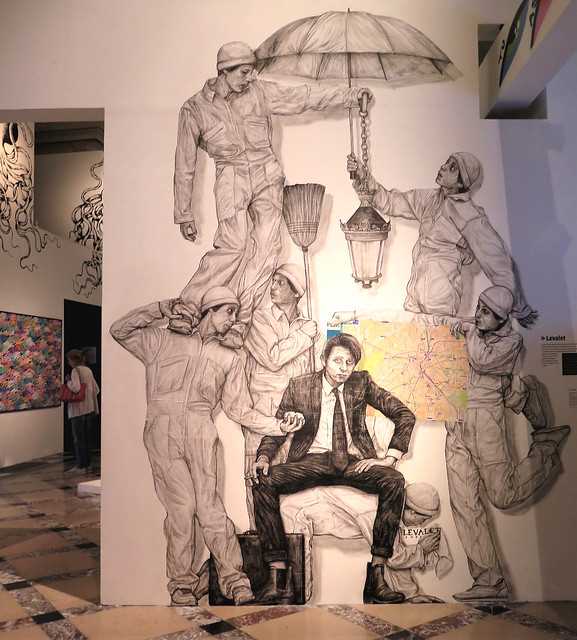
Stencil art has had a significant impact on the Paris street art scene. It has allowed artists to create highly detailed and intricate designs, often with a political or social message. Stencil art has also made the process of creating street art more accessible, as stencils can be easily replicated and reused.
Many notable stencil artists have emerged from the Paris street art scene, such as Miss.Tic and C215. Their works can be found throughout the city, brightening up walls and adding vibrancy to the urban landscape.
Overall, stencil art is one of the defining features of Paris’ street art scene. Its unique and recognizable style has made a lasting impact on the city’s artistic culture and continues to inspire both local and international artists.
Paris as an Outdoor Art Gallery
Paris is not only known for its iconic landmarks and museums, but also for its vibrant street art scene. The city acts as an outdoor art gallery, with colorful and thought-provoking artworks adorning the walls, buildings, and even street signs.
Walking through the streets of Paris, one can stumble upon incredible murals, stencils, and graffiti pieces that showcase the talent and creativity of local and international artists. From the lively neighborhood of Belleville to the bohemian streets of Montmartre, there is something for everyone to explore and discover.
Diverse Styles and Themes
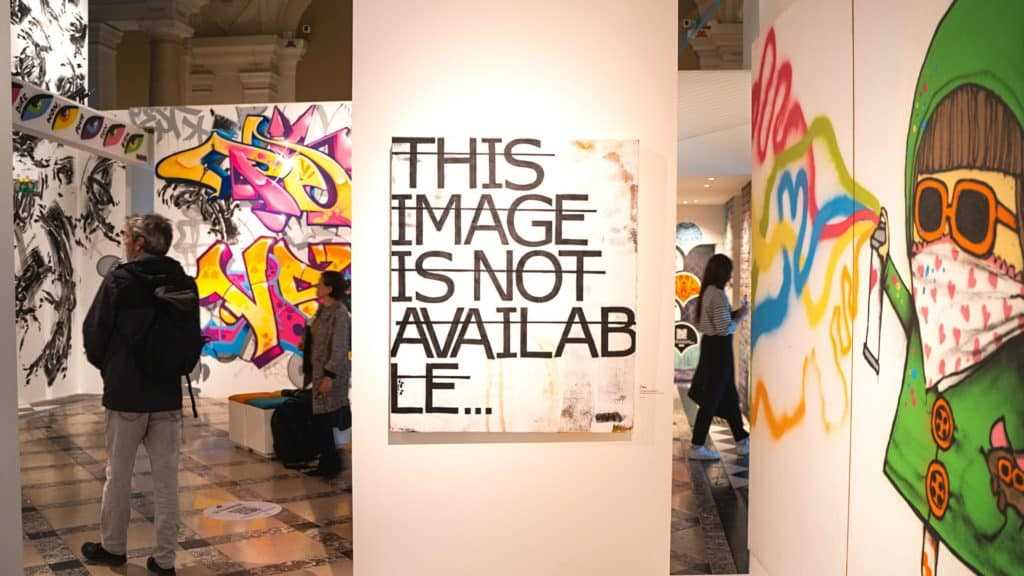
Street art in Paris encompasses a wide range of styles and themes, reflecting the diversity and expression of the artists. From whimsical characters and abstract designs to political statements and cultural references, each artwork tells a unique story and leaves a lasting impression on viewers.
Artists like Invader, who is famous for his pixelated tile mosaics, have left their mark in Paris, with their artworks becoming an integral part of the city’s identity. Other notable street artists such as Blek le Rat, Jef Aerosol, and Miss.Tic have also made significant contributions to the street art scene in Paris.
Preservation and Appreciation
The city of Paris has embraced street art as a form of artistic expression and has taken steps to preserve and appreciate these outdoor artworks. The Paris Street Art app and guided tours offer visitors the opportunity to explore the city’s street art hotspots and learn about the artists behind the works.
Furthermore, street art festivals like the “Nuit Blanche” or the “Street Art Fest” provide platforms for both established and emerging artists to showcase their talents. These events bring together art enthusiasts and promote the appreciation of street art as a legitimate art form.
Paris truly stands as an outdoor art gallery, where the streets themselves become a canvas for artists to make their mark. The ever-changing landscape of street art in Paris continues to inspire and captivate both locals and tourists alike, adding a new layer of creativity and vibrancy to the city’s cultural heritage.
The Impact of Street Art Exhibitions in Paris
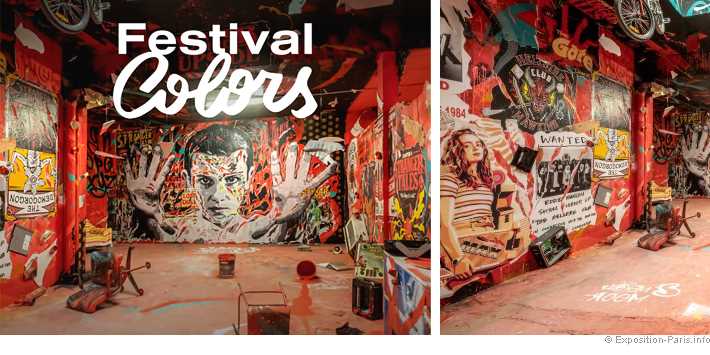
Street art exhibitions in Paris have had a significant impact on the cultural scene of the city. These exhibitions serve as a platform for both established and emerging artists to express themselves and showcase their work to a wider audience.
One of the main impacts of these exhibitions is the revitalization of public spaces. Previously neglected areas of the city are transformed into vibrant art galleries, attracting locals and tourists alike. This not only contributes to the beautification of the city but also promotes a sense of community and pride among its residents.
Additionally, street art exhibitions in Paris provide a voice to marginalized groups. Artists often address social, political, and economic issues through their artwork, shedding light on these important topics. By displaying their work in public spaces, these artists are able to share their messages with a larger audience and provoke discussion and reflection.
The educational value of these exhibitions should not be underestimated.
Through street art exhibitions, visitors are exposed to a wide range of artistic styles and techniques, challenging traditional notions of what art is. This exposure fosters a greater appreciation for art and encourages creativity and self-expression.
Moreover, the economic impact of street art exhibitions cannot be overlooked.
These exhibitions attract tourists and art enthusiasts from all over the world, boosting the local economy. Visitors spend money on accommodation, food, transportation, and purchases from local businesses, contributing to the overall economic growth of the city.
Tagging: The Subculture of Street Art
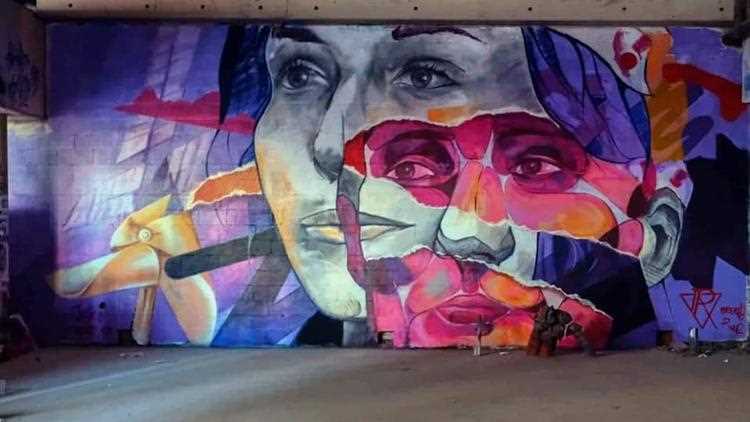
Tagging is one of the most prominent forms of street art that can be seen throughout the city of Paris. This subculture of street art involves the creation of unique signatures or tags that mark the artist’s presence in a particular area. Tagging can be found on walls, buildings, and other public spaces, often in highly visible locations.
The practice of tagging has a long history and is deeply rooted in the graffiti culture. It provides artists with a way to express themselves and leave their mark on the urban landscape. Tags can range from simple signatures to elaborate designs, combining different styles and techniques. Artists often use spray paint, markers, or other tools to create their tags.
Tagging is not without controversy. Many consider it to be vandalism and illegal, as it involves defacing private or public property without permission. However, others argue that tagging is an art form and a legitimate way for artists to make their voices heard in public spaces. There is an ongoing debate about the boundaries between art and vandalism in the world of street art.
In recent years, tagging has gained recognition as a significant form of artistic expression. Some street artists who started as taggers have become influential figures in the art world, showcasing their work in galleries and museums. Street art exhibitions, like the one in Paris, provide a platform for artists to display their talent and engage with a wider audience.
Tagging is a global phenomenon, with street artists from all over the world leaving their marks in cities everywhere. It is a powerful subculture that continues to evolve and challenge societal norms. Whether you view it as art or vandalism, tagging plays an essential role in the history and development of street art.
| Advantages of Tagging | Disadvantages of Tagging |
|---|---|
| Provides a platform for self-expression for artists | Considered vandalism and illegal |
| Can be a powerful form of protest or social commentary | Sometimes leads to the degradation of public spaces |
| Allows artists to leave their mark and make their presence known | Can be seen as a form of territorial marking |

I am a mural enthusiast and a fervent admirer of street art. Rather than creating murals myself, I am passionate about collecting them. My love for street art knows no bounds. I am dedicated to curating and cherishing these artworks that grace the streets. My collection stands as a testament to my profound appreciation for this form of artistic expression.
read about me




